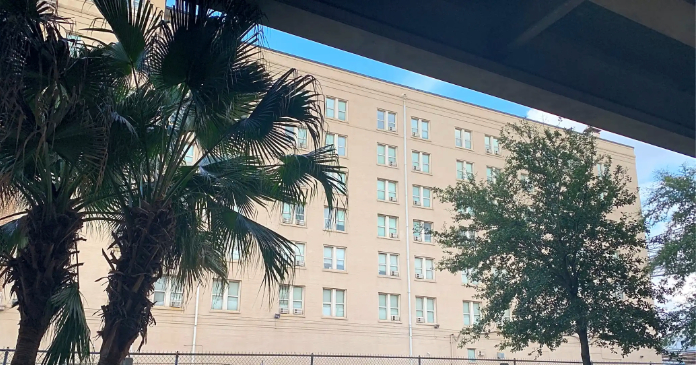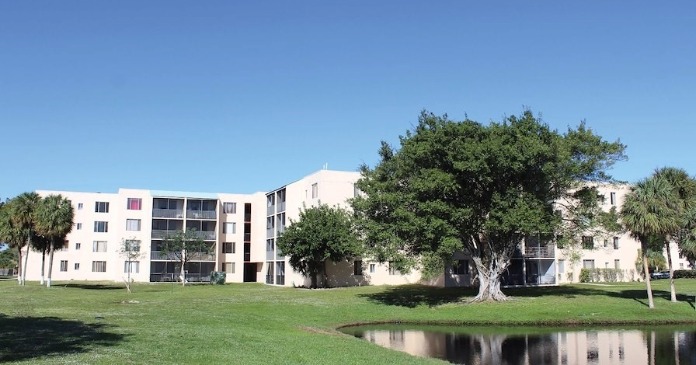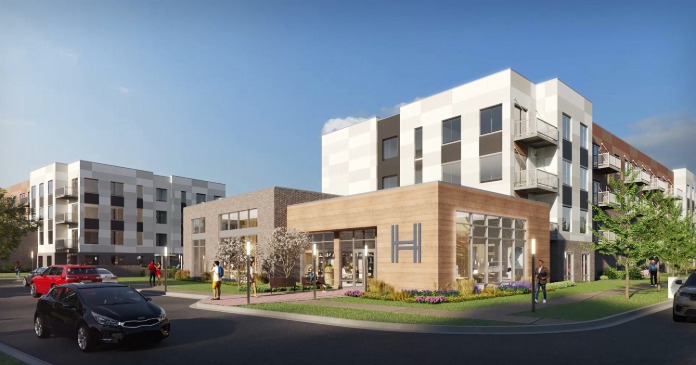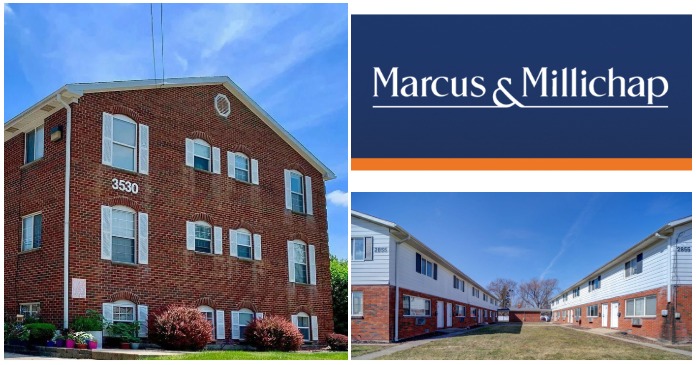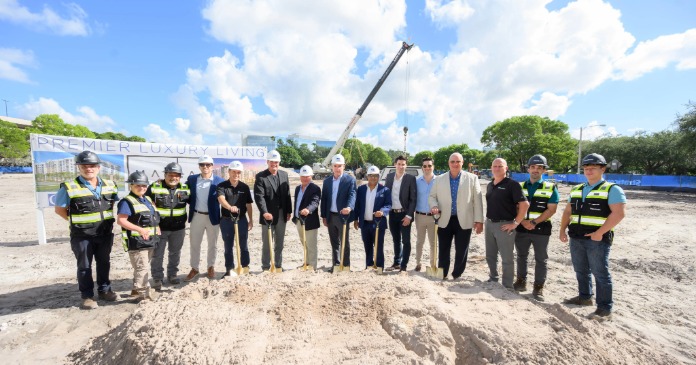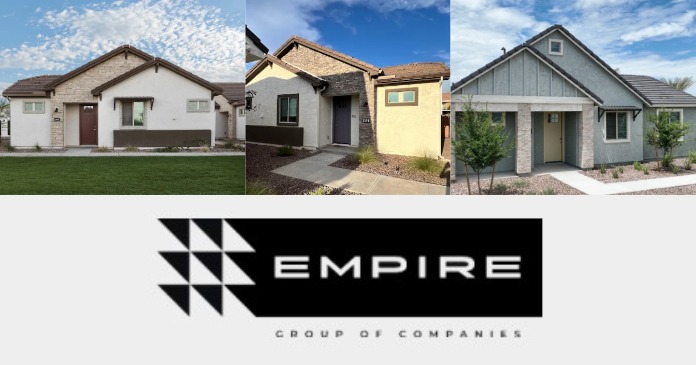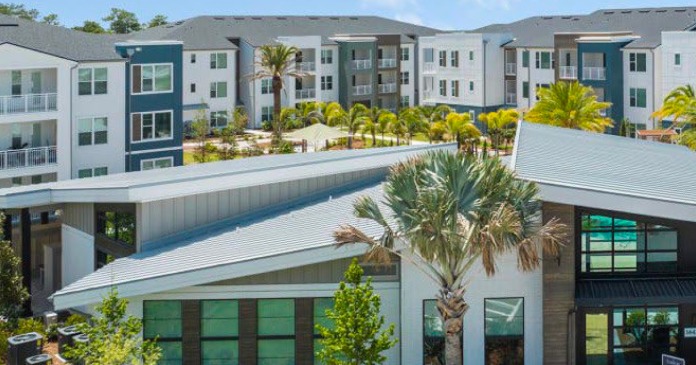Once upon a time, developers could build new housing that a household with an average income could afford—without substantial subsidies from government housing programs.
Today, the cost of land, labor and construction materials is so high that most conventional developers set their rents high, too.
“Luxury apartments still dominate the market—most of what is being built is higher-end luxury,” said Sadie Thille, director of people and culture for Greenlight Communities, a workforce housing developer based in Scottsdale, Arizona.
But developers like Greenlight are finding new ways to build “workforce housing” with rents that are affordable to moderate-income households.
Some use design to make housing more affordable. Others use factory-built components to lower the cost of construction. Others convince local or state officials to give them free land, tax abatements or the right to build more apartments in exchange for commitments by the developers to limit some rents.
Avanath develops panelized apartments
Since its founding in 2007, Avanath has been an investment firm that acquires, owns, renovates and operates apartment communities.
Recently, Avanath has added “development” to that list of its activities.
In May 2025, Avanath plans to open 70 new workforce housing apartments at Acclaim at Cheshire in the town of Cheshire, Connecticut.
Avanath keeps the rents at its communities affordable to people earning low or moderate incomes—without relying on subsidies from affordable housing programs like federal low-income housing tax credits (LIHTCs).
Rents will start at $1,300 a month for a 525-sq.-ft. one-bedroom apartment, rising to $2,500 for a 925-sq.-ft., two-bedroom unit, according to the property website. That’s hundreds of dollars less than comparable apartments available in the area.
 Those rents are easily low enough to qualify to be built “as of right” under a Connecticut state law, section 8-30g. Municipalities cannot deny an affordable housing proposal unless there is a specific significant health or safety concern or unless state housing officials find that at least 10 percent of the housing stock in a town is “affordable.” Few Connecticut towns meet that standard.
Those rents are easily low enough to qualify to be built “as of right” under a Connecticut state law, section 8-30g. Municipalities cannot deny an affordable housing proposal unless there is a specific significant health or safety concern or unless state housing officials find that at least 10 percent of the housing stock in a town is “affordable.” Few Connecticut towns meet that standard.
“We’ve priced the rents under traditional product,” said Keith Harris, president of Avanath Investment & Development, a subsidiary of Avanath Capital Management, a real estate investment firm headquartered in Irvine, California. “We already have a list of 80 potential residents showing interest, without any completed [units] to show them yet.”
The firm has partnered with Vessel Technologies, based in New York City, to build the apartments in Cheshire using panelized construction. Vessel is assembling the buildings largely using wall panels created in a factory. When the apartments are finished, Avanath will buy them from Vessel at a cost of about $200,000 per unit. It will cost Avanath a total of about $14 million to develop Acclaim.
That’s about half the $400,000 to $500,000 per unit that it would cost for Avanath to build a conventional apartment building in the area, said Harris.
Avanath and Vessel are planning to build in Connecticut and then expand to Orlando, Austin, Nashville, Seattle and Southern California.
Before its partnership with Vessel, Avanath largely focused on existing apartment properties that were already affordable to lower-income households. That includes properties originally built more than 15 years earlier with affordable housing subsidies like LIHTCs. Avanath also acquired “naturally occurring affordable housing” in the form of older apartment properties, including some that were acquired in partnerships with public agencies.
For example, in late 2022, Avanath closed its acquisition of a 669-unit apartment building in the Baldwin Village neighborhood of Los Angeles in partnership with the Housing Agency of the City of Los Angeles. In exchange for a small loan and a property tax abatement, Avanath agreed to keep a third of the units affordable to residents earning up to 60 percent of the area median income (AMI) and a third affordable to residents earning up to 80 percent.
Interest rates had already started to rise as Avanath closed the acquisition. “We haven’t done as much acquisition in the last year or so due to the cost of financing and the gap between buyer and seller expectations,” said Harris. “But interesting opportunities are again starting to present themselves.”
Townhomes for big families
By the end of June 2025, Shopoff Realty Investments, based in Irvine, California, expects to break ground on the first of four new communities of townhouses it plans to build in Riverside County.
 The attached townhouses might rent for approximately $4,000 a month, but with five bedrooms and four bathrooms each that works out to $800 a month per bedroom.
The attached townhouses might rent for approximately $4,000 a month, but with five bedrooms and four bathrooms each that works out to $800 a month per bedroom.
“It’s really designed to cater to families—specifically multigenerational families with multiple income earners,” said Cameron Ghassemi, senior vice president of acquisitions for Shopoff. The standardized, three-story floor plan also includes two enclosed parking spaces on the first floor of each townhome served by an alley.
California State law requires cities and counties to plan to allow the creation of enough affordable housing to serve their residents. “Municipalities are under pressure to fill their statewide mandated housing numbers,” said Ghassemi. “This execution allows them to do so in a manner that is essentially organically affordable or attainable.”
Shopoff’s market studies show that in its target markets, more than a third (40 percent) of the renter pool around its four projects are large households with four or more individuals. But only 3 percent of the apartments built over the last 15 years have three or more bedrooms in the area.
Shopoff has partnered with Urban Pacific, a workforce housing development and capital management company based in Long Beach, California, to develop four communities in Riverside County, totaling 240 townhouse units.
Urban, has already completed about a half dozen of these communities. “The leasing activity is quite strong, and the delinquency rates are far lower than average,” said Ghassemi.
Because the units are targeted to families in which more than one member is working, the household collectively is less vulnerable if one of the family members loses a job.
“We’re targeting a certain renter group that doesn’t have a housing solution,” said Ghassemi. “Most of our tenants are simply elated to find a housing unit that is a solution for them and their respective families.”
Building without exterior hallways
Another developer, Greenlight, has built 17 workforce housing developments since 2020.
“We’ve developed a highly repeatable and cost-efficient approach,” said Greenlight’s Thille. “That allows us to deliver high-quality housing without relying on public subsidies or tax credits and still keep rents attainable for Arizona’s workforce.”
In September 2024, Greenlight opened Streamliner 16th, a new community in Phoenix, Arizona. Rents start at $1,019 a month for a 431-sq.-ft. studio and rise to $1,419 a month for a 698-sq.-ft., two-bedroom apartment.
The three-story, wood frame buildings avoid the need for interior hallways. Instead, exterior stairs lead to long balconies that run the length of the second and third floors, similar to walkways at many resort hotels. The efficient buildings fit 208 new apartments onto 5.3 acres, averaging 39 units per acre. The developer also reduced the cost of construction by re-using floor plans and acting as its own general contractor.
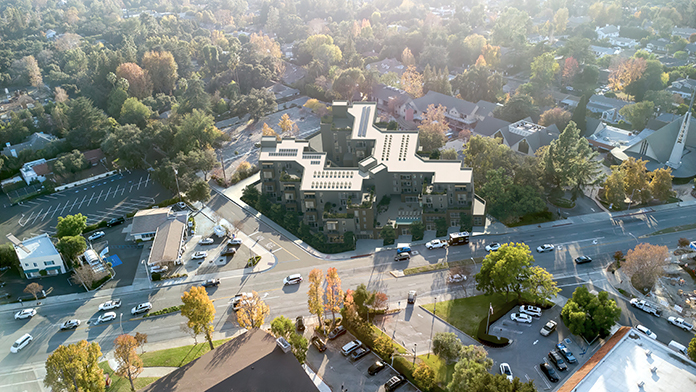
The savings allow Greenlight to go above the standards set by the building code for features like noise insulation and energy-efficient windows—and still offer highly competitive, workforce housing rents.
“These kinds of features tend to lower our maintenance costs and help keep residents longer, which is good for the property overall,” said Thille.
Workforce rents for land, concessions
A growing number of cities and towns are willing to reward developers who commit to building workforce housing with property tax abatements, approval to build larger projects or even free land.
“I actually just receive an approval that way in Irvine Calif.,” said Cameron Gunter, founder and CEO of PEG Companies, based in Provo, Utah. The planned development will reserve up to 20 percent of its apartments for households earning up to 80 percent of the area median income (AMI).
In exchange for those lower rents, Irvine’s local officials will allow PEG to increase the density of the project, making room for more apartments. The rents limits will be written into the deed for the mixed-income property. “That 20 percent—it’s a good mix. You truly are mixing the workforce into a community of market-rate apartments.”
PEG also agreed to limit the rents on 20 percent of the apartments at Paperbox Lofts, an apartment community that opened in August 2022 in Salt Lake City. The Salt Lake City Redevelopment Agency provided land valued at $3.2 million at no cost to the development. That trimmed the cost to develop the Paperbox Lofts from $55 million to $51.8 million. In exchange, for 30 years, PEG will limit the rents on 20 percent of the 195 apartments at Paperbox Lofts to be affordable to households earning up to 60 percent of AMI.
More and more cities are now willing to make deals like this with developers, said PEG’s Gunter. “This is going to be the case in Irvine. I looked at a property in Tucson, Arizona, last week that could be something similar—that property is owned by a quasi-government entity.”
Workforce housing beats NYMBYism
In some places, workforce housing can be the only way to break through local resistance to apartment development.
Cedar Street Partners, based in Los Angeles, has been fighting for years for the right to build new apartments in La Cañada Flintridge, a wealthy community with just 20,000 residents in Los Angeles County.
 In April 2024, the firm won a lawsuit that should allow it to finally start construction on 600 Foothill in early 2026.
In April 2024, the firm won a lawsuit that should allow it to finally start construction on 600 Foothill in early 2026.
The site has a long history of failed development plans. Oakmont Senior Living, based in Irvine, California, tried for nearly five years to develop a new assisted living community on the site. Even though permitted by zoning and only subject to a conditional use permit, Oakmont finally gave up after someone from the town mailed a dead rat to the developer in a package postmarked from the post office serving the town.
Cedar Street bought the site in 2019 and attempted to build its own mixed-use seniors development and was also refused.
In 2017 and 2024, lawmakers in California strengthened the 1982 Housing Accountability Act. The law requires California cities and counties to create a general plan for their own growth, including a “housing element” that adequately plans to meet the housing needs of everyone in the community, at all income levels. The new amendments to the law provide a “builders remedy.” Jurisdictions without a substantially compliant housing element cannot deny certain workforce housing projects.
La Canada was a long, long way from being in compliance. City officials had approved the construction of a grand total of just three units of multifamily housing since 2000. All other existing apartment buildings in the city were built before 1976.
Cedar Street changed its plan from a mixed-use seniors housing development to a mixed-use development with mixed-income housing. City officials refused to even consider that development plan, just as they had refused all earlier proposals by denying it at the application stage.
“Going from the seniors to the combination with the affordable housing gave us the builders remedy,” said Jonathan Curtis, founder and CEO of Cedar Street Partners, based in Glendale, Calif. He had lived for many years in La Cañada Flintridge, serving on the City Council and as mayor of the town.
Two nonprofits, Californians for Homeownership, based in Sacramento, and the California Housing Defense Fund, based in Oakland, sued the city on behalf of Cedar Street in July 2023. In December 2023, the California Attorney General joined the lawsuits. The city lost all those cases. In March 2025, the city gave up on appealing those decisions. The judge gave the city just 60 days to approve the project to allow the development to go forward.
“The city has spent approximately $2 million fighting us, based on public records,” Curtis said.
Cedar Street plans to build 80 new, mixed-income apartments at 600 Foothill. The five-story building will also include 14 hotel units, 7,791 sq. ft. of office space and 193 underground parking spaces.
Of the 80 apartments, 16 units at the new building be will “workforce housing” with rents set to be affordable to households earning up to 80 percent of the area median income. Those units add up to 20 percent of the rental apartments on the site. The affordability of these units will be written into a covenant encumbering the property, so that they stay affordable in perpetuity.






